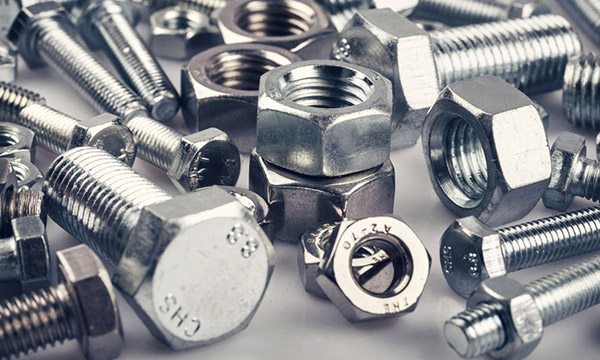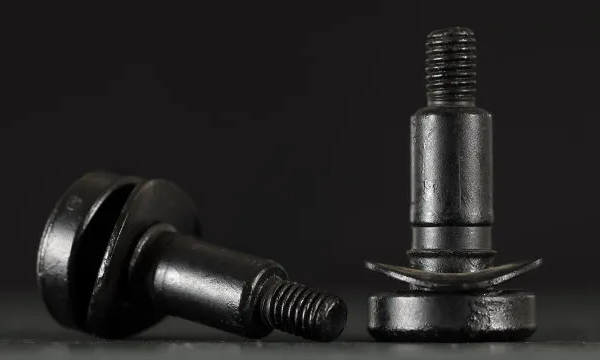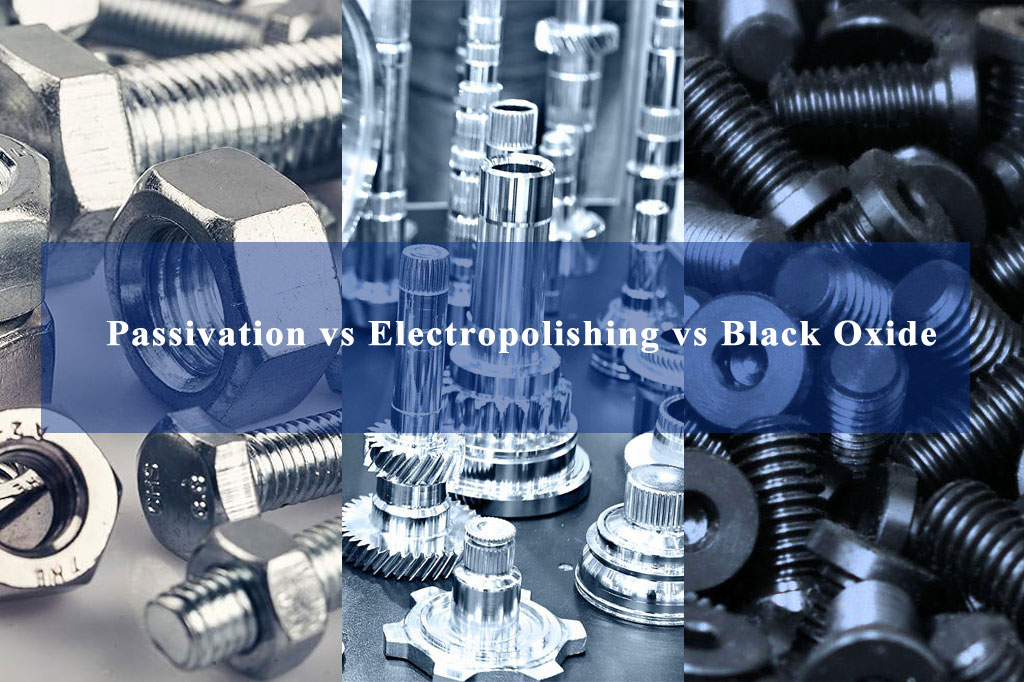In metal parts manufacturing, surface finishing plays a crucial role in enhancing performance, appearance, and durability.
Among the many methods available, passivation, electropolishing, and black oxide are popular chemical treatments used to improve the quality of metal surfaces. Each process offers distinct advantages based on the material and intended application.
This article will explore these three chemical surface finishes, outlining their differences, benefits, and ideal use cases.
Passivation: Enhancing Corrosion Resistance

Passivation is a chemical treatment that eliminates free iron and contaminants from the surface of stainless steel and other metals, creating a protective oxide layer that boosts corrosion resistance.
The process typically involves immersion in an acidic solution (often nitric acid) to promote the formation of an inert chromium oxide layer on stainless steel.
Benefits of Passivation:
- Corrosion Resistance: Passivation enhances the corrosion resistance of metal parts, especially stainless steel, making it a key advantage in prolonging their lifespan. The passivated layer prevents further oxidation and protects the material from rust and other environmental damage.
- Increased Durability: The oxide layer formed during passivation acts as a barrier against corrosive elements like moisture, salts, and acids, extending the life of metal parts.
- Non-Destructive: Passivation does not remove material from the surface but enhances the surface properties, making it ideal for parts requiring dimensional accuracy.
Best Applications for Passivation:
- Stainless Steel Components: Passivation is widely used on stainless steel to maintain its strength and resistance to corrosion in industries like pharmaceuticals, food processing, and medical devices.
- Aerospace & Automotive Parts: Passivated metal components are frequently used in environments where long-lasting performance and resistance to harsh conditions are essential.
Electropolishing: Achieving Smoothness and Brightness

Electropolishing, or electrochemical polishing, is a process that utilizes an electrolytic bath to remove a fine layer of material from the metal’s surface, improving its finish. It not only smooths the surface but also provides a shiny, mirror-like finish by reducing surface roughness.
Electropolishing is most commonly applied to stainless steel but can be used on various metals.
Benefits of Electropolishing:
- Surface Smoothness: Electropolishing effectively smooths out microscopic surface irregularities, resulting in a uniform, shiny finish that is often desired for aesthetic purposes.
- Improved Corrosion Resistance: While it doesn’t form a protective oxide layer like passivation, electropolishing reduces surface defects that could harbor corrosive agents, indirectly improving corrosion resistance.
- Reduced Friction: The smooth finish can reduce friction, which is especially beneficial for parts used in mechanical and moving applications.
- Cleaner Surface: This process also eliminates contaminants, oils, and particulates, making it ideal for industries that require sterile surfaces, such as food processing and pharmaceutical production.
Best Applications for Electropolishing:
- Medical Devices: Electropolished surfaces are ideal for medical implants and surgical instruments, where both cleanliness and smoothness are crucial.
- Aerospace and Automotive Parts: Parts requiring high performance under demanding conditions often benefit from electropolishing for its smoothness and aesthetic appeal.
- Food Processing and Pharmaceutical Equipment: The process provides hygienic surfaces by removing microscopic debris, crucial in environments where contamination risks need to be minimized.
Black Oxide: Aesthetic and Functional Protection

Black oxide, also known as blackening or parkerizing, is a chemical treatment that applies a black oxide layer to ferrous materials such as steel and iron. The procedure involves immersing the metal in a heated alkaline solution with oxidizing agents.
This creates a black, matte finish that offers both aesthetic and protective benefits.
Benefits of Black Oxide:
- Enhanced Corrosion Resistance: While not as strong as passivation in corrosion resistance, black oxide still provides a certain level of protection against rust and corrosion, particularly in mild environments.
- Improved Lubrication: The porous nature of the black oxide coating can trap oils and lubricants, which helps reduce friction and wear in mechanical applications.
- Aesthetic Appeal: Black oxide offers a sleek, uniform black finish that is often preferred for industrial and decorative parts.
- Magnetic Properties: Unlike some coatings, black oxide doesn’t significantly alter the magnetic properties of the underlying metal, making it suitable for parts requiring magnetic characteristics.
Best Applications for Black Oxide:
- Tooling and Hardware: Black oxide is commonly used on screws, bolts, nuts, and other fasteners that require some level of corrosion resistance and an appealing black finish.
- Automotive and Aerospace Parts: Components exposed to regular wear and tear benefit from black oxide coatings, especially in applications where friction and lubrication are key considerations.
- Weapons and Sporting Equipment: Firearms and equipment like golf clubs are often treated with black oxide to offer both a protective finish and an aesthetic appeal.
Key Differences Between Passivation, Electropolishing, and Black Oxide
| Feature | Passivation | Electropolishing | Black Oxide |
|---|---|---|---|
| Process | Acid treatment to create oxide layer | Electrochemical process to smooth surface | Chemical treatment to create black oxide layer |
| Primary Benefit | Corrosion resistance | Surface smoothness and brightness | Corrosion resistance and aesthetic finish |
| Surface Finish | Matte, dull | Shiny, mirror-like finish | Matte black finish |
| Material Types | Stainless steel, alloys | Stainless steel, titanium, aluminum | Ferrous metals (steel, iron) |
| Use Cases | Stainless steel, medical devices | Medical, food processing, aerospace | Tools, fasteners, firearms |

